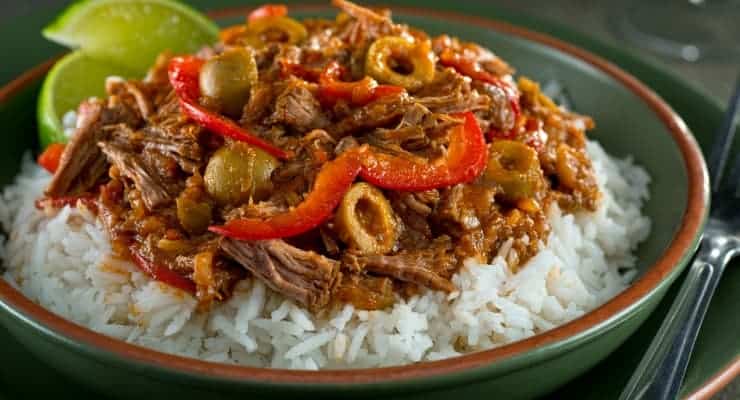Top 5 Tastes: Cuba
Cuba is still a mysterious place to many, bringing to mind only a few hazy images of vintage cars, cigars, mojitos, and Cuban sandwiches. Not many outsiders would be able to list the most authentic dishes and drinks of the gorgeous island in the northern Caribbean sea. So let’s remedy that and discover the unique blend of Spanish, African, Caribbean, and Taino influences! Experi was lucky to experience the colorful, flavorful, and fresh ingredients of Cuban cuisine just last month as we journeyed through family-owned farms and local paladars (in-home restaurants). Here are our Top 5 Tastes from soulful Cuba!

1. Yuca con Mojo
Yucca, also known as cassava, is a starchy tuberous root that grows naturally in Cuba and has a texture similar to potatoes. In Cuban cuisine, it’s often served as yuca con mojo. In this mouthwatering and bold dish, the yucca plant is boiled and peeled, then smothered in a pungent sauce called mojo. Recipes for mojo differ depending on what’s currently available in Cuba, but it usually includes oil, plenty of garlic, onion, spices like oregano, and some sort or citrus juice, usually lime. Mojo sauce came to Cuba from the Canary Islands, and it adds a sweet, garlicky bite to the rich yucca plant.

2. Moros y Cristianos
This is Cuba’s version of rice and beans, and it’s extremely popular. It’s a typical Cuban meal seen throughout the country, and it goes by a few different names: Congris, Moros, Arroz Moro, or Moros y Cristianos. Meaning “Moors and Christians,” the name refers to the Reconquista, a historical warring period between the Islamic Moors and Spanish Christians. The combination of the rice with the beans in this dish represents the eventual peacetime of these opposing peoples.
Moros y Cristianos is fairly simple to prepare. Boil beans and rice separately. Sauté garlic, onions, bell pepper, bay leaf, and oregano, and combine everything. Delicious for lunch or dinner!

3. Platanos Maduros
Cuba grows a variety of tropical fruits like guava, pineapple, mango, coconut, and more. Among those are the ever popular plantains, prepared in a variety of ways, including frying them twice for tostones or baking them with cinnamon for plátano en tentación.
Another popular plantain dish is platano maduros or fried ripe plantains. For this recipe, only plantains that are superbly ripe with completely black skin should be used as this will create a much sweeter flavor. Skin the plantains, cut them into diagonal pieces, and fry both sides in canola oil until they’re crispy and caramelized on the outside and soft on the inside. Enjoy them savory by sprinkling them with salt or make them sweeter with a dusting of sugar. Of course, this goes without saying, they’re enjoyed best while looking out across the Caribbean Sea from Cuba with a mojito in hand.

4. Rum Drinks
Rum is quintessential to Cuban flavor, used as the main liquor in all of Cuba’s traditional cocktails and mixed drinks. If you haven’t tried these drinks below, you should! Now! Each are refreshing and great for summertime.
Mojito — White rum, sugar, fresh lime juice, sparkling water, mint
Frozen Daiquiri — White rum, sugar, fresh lime juice, Maraschino Liqueur
Pina Colada — White rum, pineapple juice, coconut cream
Cuba Libre — White rum, cola, fresh lime juice

5. Ropa Vieja
Like yuca con mojo, ropa vieja also came to Cuba from the Canary Islands. It’s a popular entree made from braised flank steak, stewed in tomato sauce with bell peppers, garlic, onion, and cumin, then shredded once the meat is entirely tender.
Delightfully strange, ropa vieja means “old clothes” in Spanish because of the torn look of the shredded beef. It’s often served with rice and beans for a full feast!
